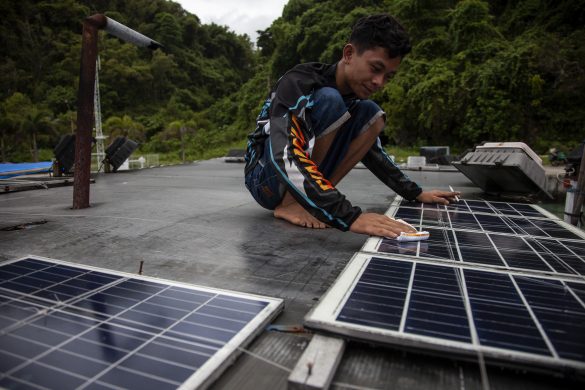Beskyttelsen vil omfatte millioner af havfugle samt hvaler og delfiner, truede havskildpadder og myriader af fiskearter. Den vil også gælde selve havbunden, som dermed ikke udsættes for undervands-minedrift.
Men ikke alt er fryd og gammen. New Zealand har været ramt af dyb miljøstrid om den truede og særegne lille, rundfinnede Maui-delfin, der kun er 55 eksemplarer tilbage af.
Landets miljøaktivister mener ikke den ekstremt sjældne delfinart nyder nær nok beskyttelse. Den findes udelukkende i farvandet vest for Nordøen og formerer sig kun langsomt.
New zealænderne er tillige miljømæsigt spændt hårdt for, da de formodes at varetage fiskeriinspektionen i et farvand omkring Antarktis på størrelse med USA, hvor udenlandske trawlere driver ulovligt rovfiskeri på kostbare fisk.
Stolt premierminister i FN
The Kermadec ocean sanctuary, in the South Pacific expands an existing reserve surrounding the Kermadec Islands, writes British daily, “The Guardian”, Wednesday.
The sanctuary will be one of the world’s most significant fully protected ecosystems, the prime minister of New Zealand, John Key, told the UN general assembly in New York.
The sanctuary is in the South Pacific Ocean, about 1.000 km north-east of New Zealand, and expands a marine reserve that surrounds a clutch of small islands.
Rummer afgrundsdyb oceangrav
The area is considered crucial in terms of biodiversity, featuring nearly 35 species of whales and dolphins, 150 types of fish and three of the world’s seven sea turtle species.
It is also geologically significant, encompassing the world’s longest chain of submerged volcanoes and the second deepest ocean trench (dybvandsgrav), plunging to 10 km underwater – deeper than Mount Everest is tall.
Commercial and recreational fishing will be completely banned, as will oil, gas and mineral prospecting, exploration and mining. Key’s government aims to pass legislation establishing the sanctuary next year.
Nu fire store havreservater i Stillehavet
New Zealand will monitor the area via its navy and satellite technology.
The Kermadec region will join three other key areas in the Pacific protected by the US, UK and Australia, with the four reserves covering 3.5m sq km of the ocean.
Matt Rand, director of the Pew Charitable Trust’s global ocean legacy campaign, welcomed Key’s announcement:
“This commitment is an exciting step toward meeting global goals to safeguard at least 30 per cent of the ocean through fully protected marine reserves”, he noted according to “The Guardian”.














